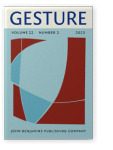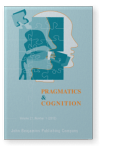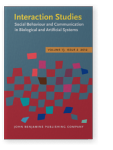Mary Lee A. Jensvold
List of John Benjamins publications for which Mary Lee A. Jensvold plays a role.
2023 Chimpanzees coordinate interrogative markers to ask questions Gesture 22:2, pp. 121–153 | Article
Questions serve to initiate and continue conversation as well as to gain information and introduce new topics. In signed languages a question can be signaled by modifying the content of an utterance or by coordinating the use of nonmanual markers (e.g., the questioning look) and manual… read more
2013 The communicative functions of five signing chimpanzees (Pan troglodytes) Pragmatics & Cognition 21:1, pp. 224–247 | Article
Speech act theory describes units of language as acts which function to change the behavior or beliefs of the partner. Therefore, with every utterance an individual seeks a communicative goal that is the underlying motive for the utterance’s production; this is the utterance’s function. Studies of… read more
2012 Contingency in requests of signing chimpanzees (Pan troglodytes) Interaction Studies 13:2, pp. 147–164 | Article
Conversational interactions depend on partners making contingent responses. This experiment examined the responses of five chimpanzees (Pan troglodytes), Washoe, Moja, Tatu, Dar and Loulis, to four conversational conditions. Following the chimpanzee’s request, a human interlocutor either: (1)… read more
2010 Caregiver–chimpanzee interactions with species-specific behaviors Human–Animal Interaction, Gácsi, Márta and Ádám Miklósi (eds.), pp. 396–409 | Article
The relationships between captive primates and their caregivers are critical ones and can affect animal welfare. This study tested the effect of caregivers using chimpanzee behaviors or not, in daily interactions with captive chimpanzees. In the Chimpanzee Behavior (CB) condition the caregiver… read more



